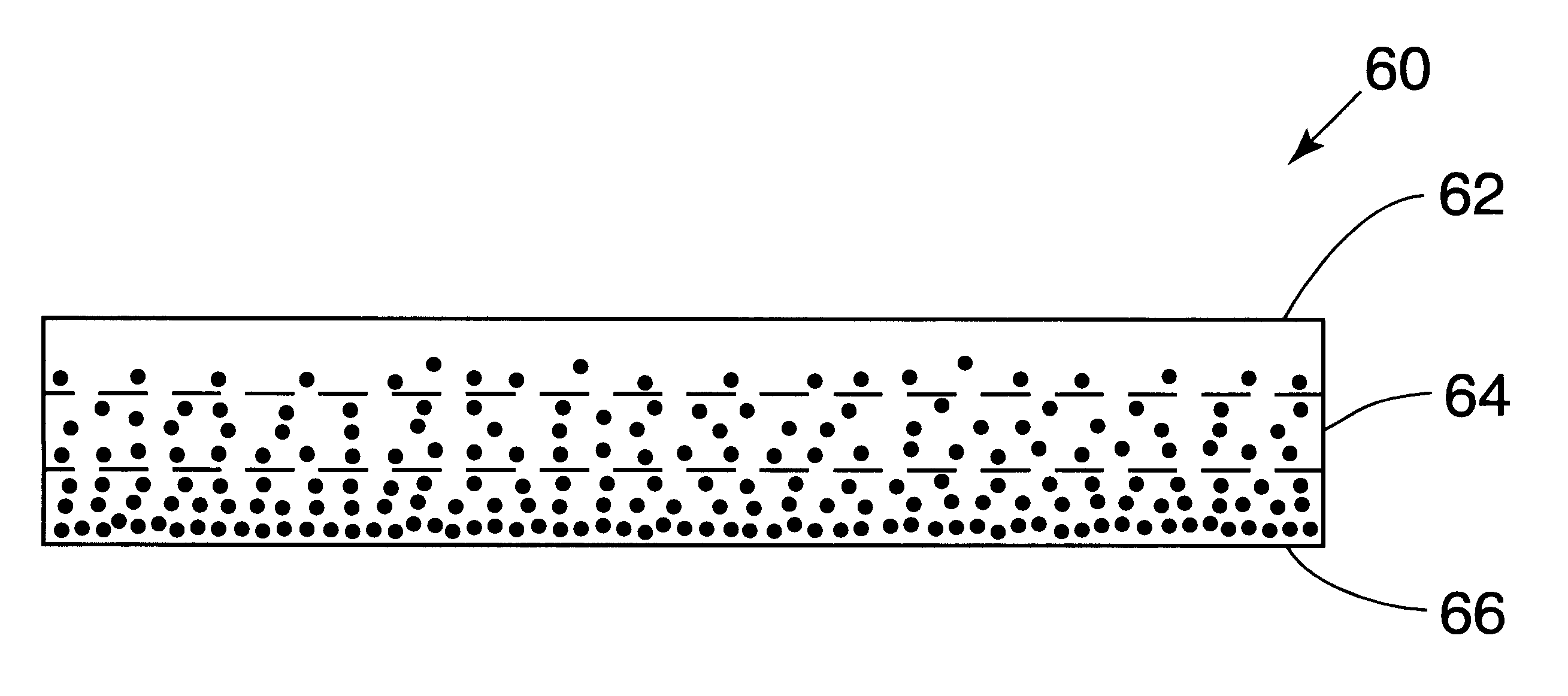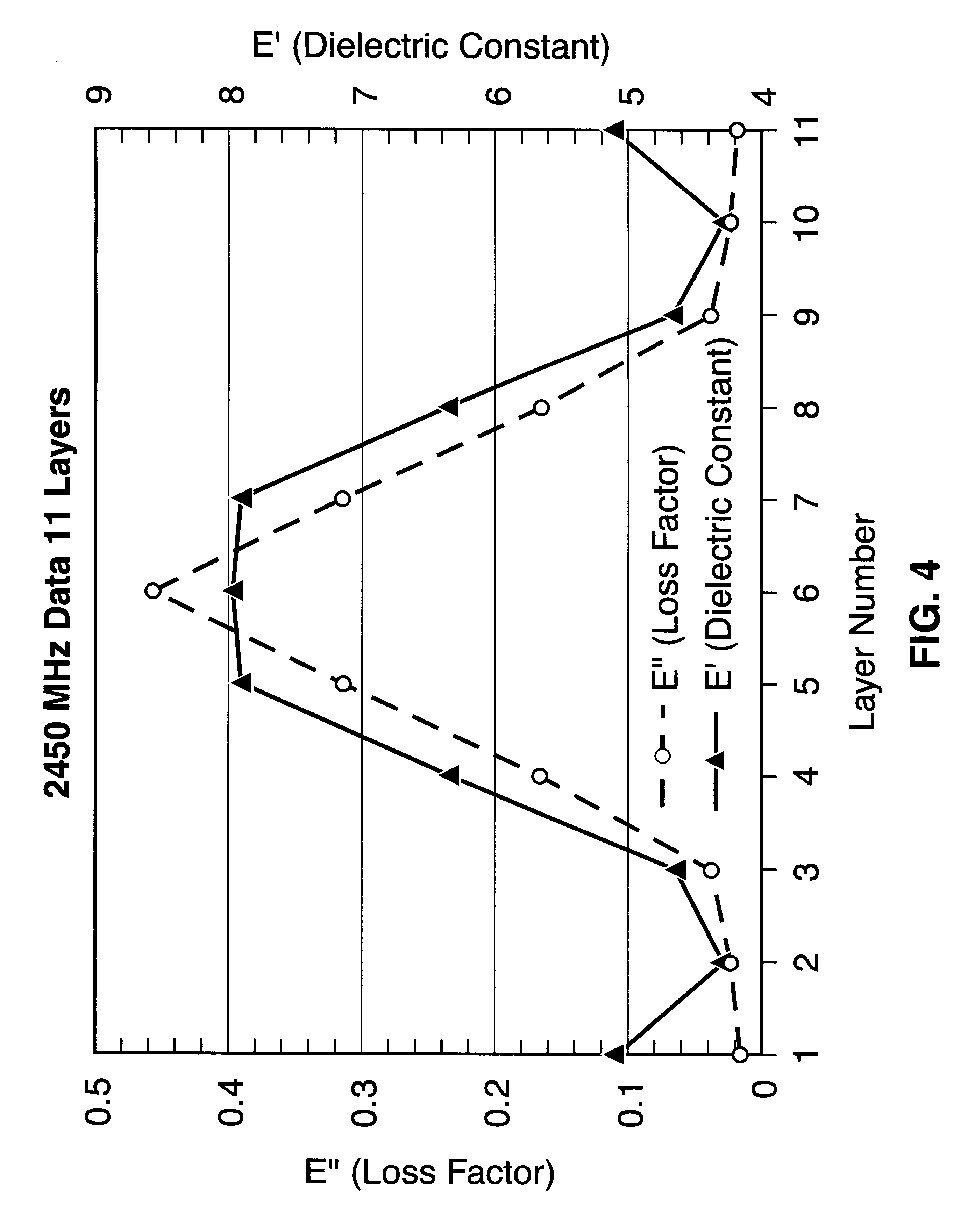Method of making a functionally graded material
- Summary
- Abstract
- Description
- Claims
- Application Information
AI Technical Summary
Benefits of technology
Problems solved by technology
Method used
Image
Examples
example ii
After considering the principles which were causing the anisotropic sintering, the amount of shrinkage in each successive layer was tailored by adding fully dense Al.sub.2 O.sub.3 grit (in increasing proportions and also increasing particle sizes) toward the high Al.sub.2 O.sub.3 ends. In this manner, as the Al.sub.2 O.sub.3 v. % increased, the grit size and the grit v. 1% was also increased, as shown in Table I. This reduced the shrinkage because the dense Al.sub.2 O.sub.3 grit served as refractory filler material. For example, on specimen No. 3-2 for the pure Al.sub.2 O.sub.3 layer, only about 6.25% shrinkage occurred (from beginning wet to post-sintering). On the layer containing 50% SiC, shrinkage was about 5.6%. Again the objective was to grade some of the specimens to have bilateral symmetry; (0%, 10%, 20%, 30%, 40%, 50%, 40%, 30%, 20%, 10%, 0% additions of SiC) thus opposite ends would be Al.sub.2 O.sub.3 only, graded symmetrically toward the center (increasing the amounts of...
example iii
The specimens fabricated in Example 2, designed to yield a stepwise grading of SiC content in Al.sub.2 O.sub.3 between 0% and 50%, are used to attenuate microwaves in various applications. As shown in FIG. 4, a sample prepared according to the method above had a gradient of its dielectric properties along its length corresponding to the compositional gradient established by the inventive technique. Skilled artisans will appreciate that an insulating rod with such tapering of its dielectric properties will be useful in applications such as insulator rods in a helix travelling wave tube.
An alternate method of inducing a particular amount of grading is to prepare a gelcasting slurry having at least two different dispersed phases having different settling characteristics. All materials are added to the same slurry, introduced into a mold, and allowed to stand for a sufficient period of time to permit differential settling, flotation, or flocculation to effect fractionation in order to a...
example iv
Graded specimens of Al.sub.2 O.sub.3 and Ni metal powders were fabricated by gelcasting methods. A 55 v. % slurry of Al.sub.2 O.sub.3 (RCLS DBM) was first prepared by an ordinary mixing procedure. Ni metal powder was then added at 10 v. % (of the solids) to the slurry and thoroughly mixed (Table 2). The initiator and catalyst were added, and the slurries were poured into molds to gel. Since the density of the Ni powder is 8.9 g / cc, and the density of the Al.sub.2 O.sub.3 slurry was only 2.63 g / cc, the Ni metal powder settled through the Al.sub.2 O.sub.3 slurry. In these experiments, prepared mixtures containing the metal powder were allowed to stand (vertically) in cylindrical molds for varying amounts of time, for example, 0 min., 5 min., 10 min., followed by thermal gelation. By increasing the initiator and catalyst, gelation was achieved in less than 5 minutes, thus locking in the graded structure. The specimens so produced exhibited distinctive grading in a continuous manner fro...
PUM
| Property | Measurement | Unit |
|---|---|---|
| Volume | aaaaa | aaaaa |
| Volume | aaaaa | aaaaa |
| Volume | aaaaa | aaaaa |
Abstract
Description
Claims
Application Information
 Login to View More
Login to View More - R&D
- Intellectual Property
- Life Sciences
- Materials
- Tech Scout
- Unparalleled Data Quality
- Higher Quality Content
- 60% Fewer Hallucinations
Browse by: Latest US Patents, China's latest patents, Technical Efficacy Thesaurus, Application Domain, Technology Topic, Popular Technical Reports.
© 2025 PatSnap. All rights reserved.Legal|Privacy policy|Modern Slavery Act Transparency Statement|Sitemap|About US| Contact US: help@patsnap.com



